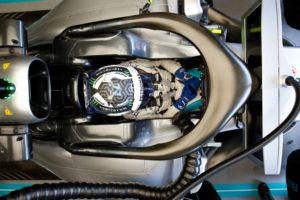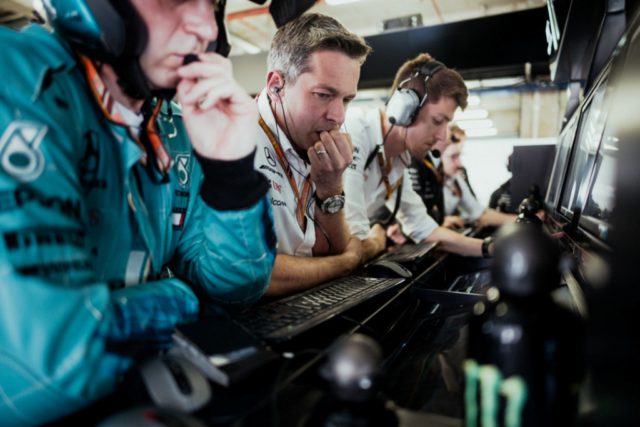For decades, Formula One has been dubbed the “fastest R&D lab on Earth”. The notion was that motor racing technology would sooner or later trickle down to the road car world. While that was certainly the case for some innovations and inventions, it was not necessarily true on a large scale. The challenges of Formula One were often too specific or the cost for industrial-scale production too high to introduce certain technologies in production vehicles. This, however, has changed in recent years.
Since the introduction of full hybrid powertrains, F1 technology has become more relevant for road cars than it has ever been before. But it is also true for other parts of the car – especially in the world of bits and bytes. Here is the second of five reasons, presented by Mercedes, why now, more than ever before, Formula One is at the forefront of technology – from road cars to consumer electronics, from medical technology to smart cities.

Connectivity – F1 technology might be in your next smartphone (or the one after that)
Formula One cars are probably the most connected cars in the world. A modern-day F1 car runs on high-tech sensors and the data they collect as much as it combusts high-tech fuel. To be competitive, F1 teams process a lot of data. An F1 car will sport hundreds of sensors logging thousands of channels of data. They measure all kinds of things around the car and power unit – from forces and displacements, temperatures and pressures to control parameters for power unit and gearbox as well as driver inputs.
Some of the telemetry data can be accessed in real-time as the car travels around the track at speeds up to 350 km/h and more. However, the control unit that is common for all teams limits the type and amount of real-time data. The majority of the data only transfers from the car to the engineers when the car comes into the pits. That happens either through a very fast wireless connection or with the so-called umbilical cord.
Tyres are a key performance factor in Formula One, so understanding them is crucial
During Friday practice, the team will fit an optical, infra-red tyre monitoring system onto the car to get a comprehensive picture of how different tyres are working and understand their respective single-lap and race performance. Getting the tyre data off the car as fast as possible is important. That is because the car will only be stationary in or in front of the garage for a few moments. In the past, the team would either have to sacrifice track time in order to download all the data or the engineers had to wait until after the session to access the data.
In 2017, however, the team started using a system of two high-tech wireless technologies – 5 GHz 802.11ac and Multi-gigabit 802.11ad Wi-Fi technology, which operates in the millimetre wave 60 GHz band. The handover between the two 802.11 modes is managed automatically. So while the car is travelling through the pit lane, it starts to transmit the data wirelessly. Once it is within four metres of the garage, it switches to a fast uplink, transmitting the data from the car to the garage at download speeds of up to 1.9 Gbits per second. In other words, transmitting one Gigabyte of data would take less than five seconds.
This technology is not a standalone Formula One product though. Qualcomm have developed it for the consumer market and used F1 as a high-speed R&D environment, putting their product to the ultimate test. In the future, similar technologies will come to your smartphone. They will allow for much faster download and upload speeds and a more reliable connection. Or will be used in connected cars to enable them to communicate with the outside world.
































